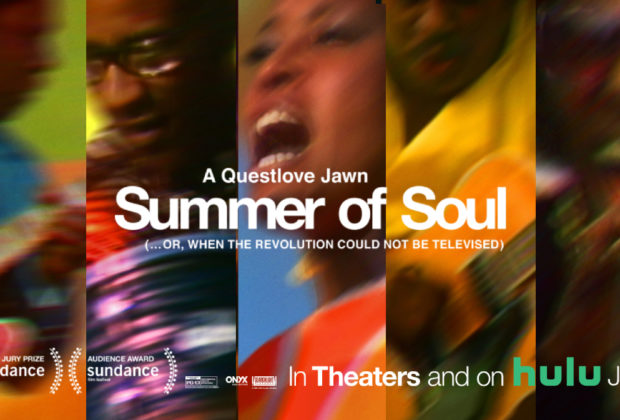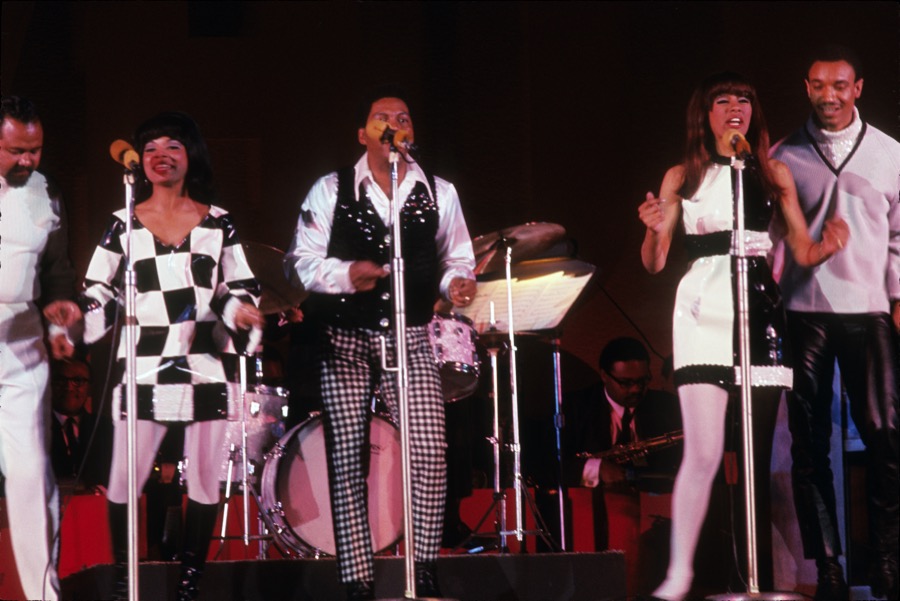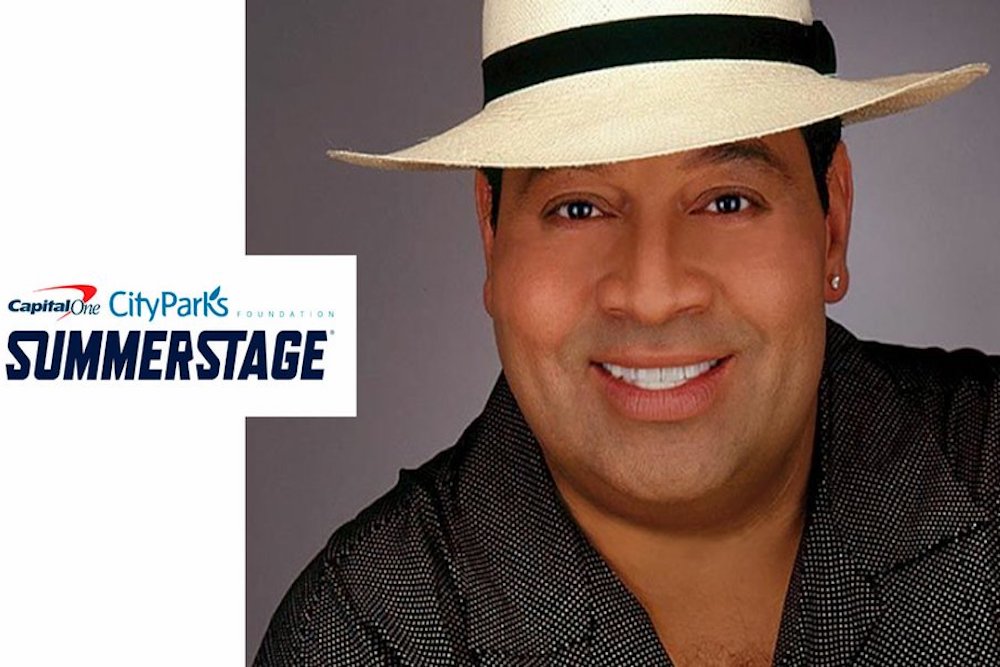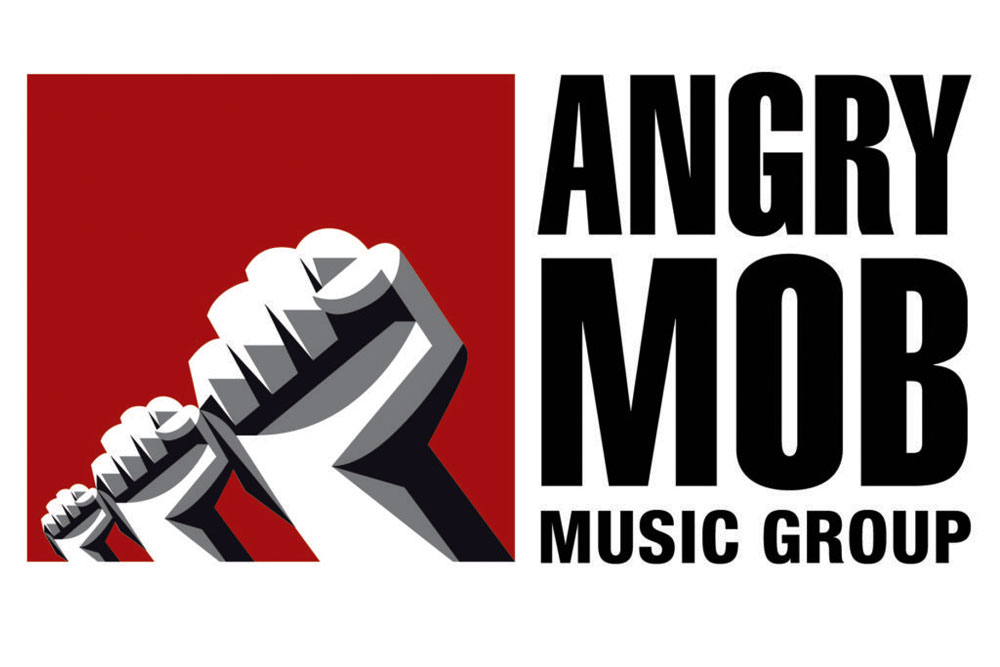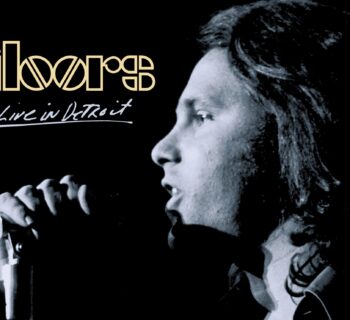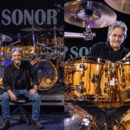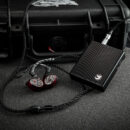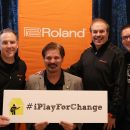Now in theaters and available to stream on Hulu is Summer of Soul (…Or, When The Revolution Could Not Be Televised), the well-received documentary about the 1969 Harlem Cultural Festival directed by Ahmir “Questlove” Thompson. Searchlight Pictures released the film on July 2nd.
The film will also stream internationally through the Star offering on Disney+ on a date to be confirmed. It premiered at rave reviews at the Sundance Film Festival where it garnered both the grand jury prize and audience award. It subsequently was sold for more than 12 million, the largest fee ever paid for a documentary in the history of the festival.
In 1969 the entire series of concerts was filmed by director and producer Al Tulchin. 52 years later we now get to see and dig aspects of this glorious event. 40 hours of unseen footage still sits in a vault.
The film chronicles the six week gathering which was held at Mount Morris Park, (now Marcus Garvey Park) in Harlem. Performers included Stevie Wonder, Mahalia Jackson, The Staple Singers, Gladys Knight & The Pips, Nina Simone, B.B. King, David Ruffin, Sly & the Family Stone, The Edwin Hawkins Singers, Moms Mabley, Max Roach and Abbey Lincoln, Herbie Mann, Mongo Santamaria, Ray Baretto, and the Fifth Dimension, the vocal ensemble of Lamonte McLemore, Florence LaRue, Ron Townson, Billy Davis Jr., and Marilyn McCoo.
I can’t say enough about Summer of Soul (…Or, When The Revolution Could Not Be Televised) and the musical talent displayed on screen. You have to wonder what if this film had a general theatrical release or any sort of distribution in the early seventies and how it would have propelled the careers or generated wider FM radio airplay for Nina Simone, Moms Mabley, Herbie Mann, Ray Baretto, and the Fifth Dimension.
I’ve featured the Fifth Dimension in a few of my books and constantly touted their delightful recorded catalog. I’m glad the group is spotlighted in this documentary. McCoo and Davis, other stage participants along with the 1969 concert goers are passionate, revealing interview subjects in Ahmir “Questlove” Thompson’s sociopolitical celluloid expedition.
Has there ever been a vocal group hailing from Southern California that earned commercial success with their immaculate Bones Howe-produced recordings and their live act that has been overlooked and misunderstood the last half century by pop culture pundits?
On April 29, 1967, AM radio station KHJ based in Los Angeles was hosting its second annual Fan Appreciation Concert at the Hollywood Bowl. All tickets were ninety-three cents each, just like KHJ’s number on the dial. My brother Kenny and I were in attendance. What did we get for that princely sum? How about the Supremes, Johnny Rivers, the Seeds, Buffalo Springfield, Brenda Holloway, and the 5th Dimension?
Johnny Rivers had fallen hard for the 5th Dimension, previously named the Hi-Fi’s, and then the Versatiles. Rivers signed them to his Soul City label, distributed by Imperial Records. Johnny also contracted songwriter Jimmy Webb to his music publishing house. With Rivers producing, Bones Howe behind the board, and those seamless voices giving lift to Webb’s artful melody and words, it was a sweet deal for all of them. Take a listen to their debut effort “Up Up And Away.”
Dayton “Bones” Howe, a drummer from Georgia, who loved jazz, came to California on the recommendation of drummer Shelley Manne and landed at Radio Recorders studio in 1956 where he worked with Elvis Presley. From 1956 through 1972 Howe’s engineering methods and song sense changed the way records were done in Hollywood and the influence is still being heard and collected globally: Jan & Dean, The Mamas & Papas, the Turtles, Johnny Rivers, the Association, and Tom Waits. He is the engineer and co-producer of the Elvis Presley ’68 Comeback Special soundtrack.
Howe took over the group’s musical activities from Rivers and selected additional material from tunesmith Webb: “Carpet Man” and “Paper Cup” and scripture from the songbook of Laura Nyro: “Wedding Bell Blues,” “Stoned Soul Picnic,” “Sweet Blindness” and “Save the Country.” The Fifth Dimension also waxed “California Soul” by the revered songwriting team of Valerie Simpson and Nicholas Ashford.
“I was a kid out of Oklahoma who headed to Hollywood to become a songwriter,” recalled Webb in my book Turn Up The Radio! Rock, Pop and Roll in Los Angeles 1956-1972.
“My heroes were Burt Bacharach, Vaughan Williams—ah, The Lark Ascending—and Johnny Mercer. My dad, a hard-down military man who spoke one syllable at a time, gave me forty bucks and wished me luck. Even though the Beatles had turned the music world upside down by writing their own songs, I knew there was still a place for me. They used strings. Buddy Holly used strings. Leiber and Stoller used strings. I wrote those kind of songs.
‘“Up, Up and Away’ was written to be the theme to a throwaway teen movie, like one of those beach blanket flicks. A movie producer wanted to do something similar, but make it all about balloons . . . only in Hollywood. He asked me to write a little theme tune, and I just went with it. Sometimes a balloon is simply a balloon. I stole the opening from the Association’s ‘Along Comes Mary,’ almost note for note.”
“I produced ‘Windy’ by the Association and went to number one and made ‘Never My Love’ which also went to number one,” Bones Howe told me in Turn Up The Radio!
“Johnny Rivers called me up. I had been the engineer on the Up, Up and Away album. He asked me if I would be interested in producing the Association. ‘Yeah!’ And he said the first thing was that I’m to do an album with Jimmy Webb called The Magic Garden. ‘He wants to do a big orchestra.’ ‘If you’re willing to pay for it I know what to do. We will go into the big studio at United and record the tracks there and I’ll put the voices.’
“The album really didn’t have a single in it. From one record to the next I began to find things that could get played on the radio,” reinforced Howe. “Jimmy wrote these beautiful harmonies. He was the hippest songwriter in town. All of his songs have major sevenths and major ninths. All those altered chords like you find in jazz. So that was what I thought was very attractive. He also wrote beautiful melodies. It was fine doing those things with Jimmy. Somebody once introduced themselves to me ‘You’re Bones Howe. You work with Jimmy Webb.’ ‘Yes.’ ‘How does he sleep with all that music in his head?’
“I was actively working with music publishers,” underlined Howe. “I heard Laura Nyro’s ‘Wedding Bell Blues’ on KHJ radio ‘cause Bill Drake the RKO programmer liked the record. Then I saw Laura at the Monterey festival in 1967. I thought Laura was amazing and it was almost jazz what she was doing. Laura was different. She had some Los Angeles studio musicians with her at Monterey like Hal Blaine who also worked with Johnny Rivers. She was a dear woman and I really loved her. She would play me stuff on the piano and it would just be bits and pieces of stuff and I would keep saying, ‘Finish it!’ R&B radio stations played ‘Stone Soul Picnic.’ It was a number one R&B hit. I kept mining the Nyro and Webb mines. I kept finding stuff I loved and it got easier when we got rolling on it.
“On the Fifth Dimension it was Hal Blaine on everything and Joe Osborn. I discovered Joe doing those Johnny Rivers records with Lou Adler. Mickey Jones was the drummer on the first Rivers sessions and Osborn. He played the bass the way I thought, as a jazz player, rock ‘n’ roll players should play the bass. Joe and Hal together were together and really the lock and the feel. Those guys were just amazing together. And then Dennis Budimir and Tommy Tedesco jazz guys. That’s kind of how I built a rhythm section. A lot of it was conversation. I always started my session in the room. The lead sheets would go out, but I always started with the guys and stood out there with them as they ran the first tune. I hated the disembodied voice that came from the control room to the floor telling everybody what to do.
“Lou Adler played a big part in my career. When I started producing, Louie was my mentor. I learned so much about what is in a producer’s head as opposed to what is in an engineer or musician’s head. And you can’t be a hit producer if you can’t find great songs. Lou was sitting and listening to all those demos at Screen Gems 1960-1963.
“The Fifth are in New York and somebody had given them tickets to see HAIR. They told me about an amazing song called ‘Aquarius.’ ‘We can do that song and it will be a big hit.’ I listened to the song and felt it wasn’t a whole song. I went to New York with my wife Melodie and we went to see HAIR. I’m watching this thing unfold and I realize ‘Aquarius’ is simply just like an introduction to the show. It doesn’t go anywhere. And then a pair of shorts comes down sliding on a wire and they sing ‘The Flesh Failures.’ A downer of a song talking about civilization is going to hell. But then the chorus ‘Let the sunshine in.’ 3 bars being repeated. ‘Oh shit! That’s how we do it.’ But I couldn’t do this until I got permission from the music publisher. I went to United Artists who had the copyright. I played the two things for the Fifth Dimension and then told them we will do the chorus at the end.
“With the Fifth Dimension I also had Bob Alcivar, a vocal arranger on the team. We worked close together. He would help me find the keys for the singers to do the songs and coax them vocally. He found ways to help them. Bob would sit at the piano with each member and teach them their part. A huge asset. He made a tremendous contribution and I couldn’t go forward with any song until he figured out what key we would do that these guys could sing it in. That was a partnership we had with the things that we had.
“On ‘Aquarius’ during production Bob Alcivar went, ‘They're in different keys! How are we going to get these things together?’ ‘We’re gonna hook them together like two trains. We will record them separately and I will find a way to put them together with Hal Blaine on drums.’ I mixed it and put it together. We put strings and horns and stuff on it and put it together. It was more like building and architecture.
“One time, I’m sitting at Martoni’s, and RKO radio programmer Bill Drake walks up to the booth. “You know, the Soul City label sent me a copy of your new record with the Fifth Dimension’s ‘Aquarius.’ ‘What do you think of it, Bill?’ ‘You know something? It’s a hit, but it’s too long.’ Think of a deejay sitting there and waiting for the hour straight up. He’s got two and a half minutes to put something in before he goes straight to the Coppertone commercial. He’s got to pick something out of the rack to stick in. They sequence their own shows. Bill said, ‘If there is any way you can get me a short version of it, I’d put it right on the air.’
“I finished my dinner, went back to the studio, and cut a 2:39 version of it. It was under three minutes. The next day, I went to the promo guy at Soul City. I had acetates of it. “This is the next Fifth Dimension hit.” It was on the radio the next day. I did what Bill asked me to do, and he did what he said he would do. That was how close the music people were to the radio station. You didn’t have to go through the whole screening at KRLA. Basically, KRLA was just listening to KHJ to see what to put on.”
Harvey Kubernik is the author of 20 books. Sterling/Barnes and Noble in 2018 published Harvey and Kenneth Kubernik’s The Story Of The Band: From Big Pink To The Last Waltz. For October 19, 2021 the duo has written a book Jimi Hendrix: Voodoo Child for Sterling/Barnes and Noble.
Otherworld Cottage Industries in 2020 published Harvey’s book, Docs That Rock, Music That Matters, featuring interviews with D.A. Pennebaker, Chris Hegedus, Albert Maysles, Murray Lerner, Morgan Neville, Dr. James Cushing, Curtis Hanson, Michael Lindsay-Hogg, Andrew Loog Oldham, Dick Clark, Ray Manzarek, John Densmore, Robby Krieger, Travis Pike, Allan Arkush, and David Leaf, among others.
Kubernik’s writings are in book anthologies, most notably The Rolling Stone Book Of The Beats and Drinking With Bukowski.Harvey wrote the liner note booklets to the CD re-releases of Carole King’s Tapestry, Allen Ginsberg’s Kaddish, Elvis Presley The ’68 Comeback Special and the Ramones’ End of the Century. Kubernik penned the liner notes to the upcoming November 2021 National Record Store Day Drops vinyl-only Lou Adler-produced release, A Combination of the Two, by Big Brother & the Holding Company featuring Janis Joplin culled from the 1967 Monterey International Pop Festival. Harvey is currently working on the manuscript Sisters In Song.
During 2020 Kubernik served as a Consultant on the 2-part documentary television series Laurel Canyon: A Place in Time directed by Alison Ellwood that premiered on EPIX television channel in 2020.

